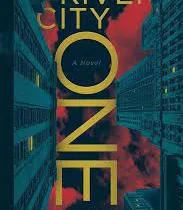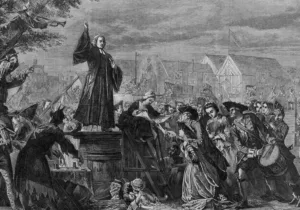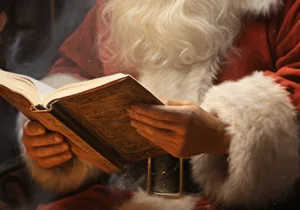Fanatically cynical pundits often depict our present period in American history as “The Fall of the American Republic” and warn their audiences of the rise of the “American Empire.” These sorts of characterizations have been prevalent since the outset of the Vietnam War and especially since the expansion of presidential power that ensued in the wake of 9/11. Occasionally, writers will point to exceptionally dramatic moments in recent history, such as the invasion of Iraq or the election of Donald Trump, and with a tragedian’s brush, paint them as the turning point whereat our republic became inexorably fated to distend itself into an empire. It would be easy to dismiss this sort of talk as hyperbolic fearmongering—after all, we don’t quite seem to be an empire just yet. However, to do so would be to disregard the unwieldy truth that history lurches forward imperceptibly on legs of varied causes and conditions.
In Rome and the Making of a World State, Georgetown professor of classics Josiah Osgood argues that such was the case with the period widely known as “the Fall of the Roman Republic.” Like their successors, writers of that period often designated certain moments as the pivotal point of tragedy. Perhaps one of the earliest and most dramatic examples is creditable to the Roman historian Velleius, who famously pointed to the moment when the populist Tiberius Gracchus stood for reelection as tribune in 133 BC. He described it as “the beginning in Rome of civil bloodshed, and of the license of the sword,” and lamented that “from this time on right was crushed by might.” More nuanced historians like Sallust or Gibbon, less prone to point to particular moments of high melodrama than policy, often marked phenomenon like the radical extension of citizenship as the cause of the republic’s collapse.
Osgood, however, paints a markedly different, cheerier picture. He contends that during that period “a more ambitious provincial administration was being developed, along with a more coherent vision of empire that promised lasting peace in exchange for loyalty to Rome.” Further, he asserts, “it was during ‘the Fall of the Roman Republic’ that the city of Rome itself became a cultural and intellectual center that eclipsed other Mediterranean cities.” Essentially, Osgood’s thesis is that the Republic’s fall ensured Rome’s ascent.
This isn’t a novel claim. As modern historians have had the opportunity to scrutinize the various developments that took place during the period, the scholastic consensus has started shifting toward an understanding that the hundred and some odd years that preceded the death of Augustus constituted a positive transition period. Specifically, Osgood works in the vein of the Cambridge historian Keith Hopkins, who argued that much of the drastic change that occurred during the period had its roots in the wealth that streamed into Rome as a result of Rome’s increasing expansion. However, Rome and the Making of the World State is not just another weighty tome riddled with graphs and gratuitous citations.
The whole of the book consists of less than 300 pages of highly journalistic prose that chronicles the life of the age in alternately animated details and general sketches. The novelist James Fenimore Cooper wrote that history is “apt to surround her heroes with an atmosphere of imaginary brightness,” which if not true in general, is certainly true of this book. Household names like Julius Caesar, Pompey, Cleopatra, and Catullus appear in Technicolor-brightness alongside amusing-yet-unloved figures like the mythologist Parthenius of Bithynia and Caesar’s early political rival Domitius Ahenobarbus. Largely, the book reads less like history and more like a series of summaries for an action-packed TV series about the period, replete with engrossingly lurid details.
For example, when Osgood describes Augustus’ wife Livia, he notes, “She was six months pregnant with a child from him when she remarried, which set tongues wagging: ‘the lucky have children in three months.’” Likewise, Osgood remarks that after the passage of censorious legislation in 18 BC, “writers had to be more circumspect,” and notes that “in the Art of Love, Ovid insisted, unconvincingly, that he was writing only about legally permitted love affairs.” But, lest this be considered off-putting, remember the counsel of Cicero: “What is the worth of human life, unless it is woven into the life of our ancestors?” Certainly, in such passages, the lives of Rome’s citizens are presented in a manner that makes them seem as tangible as neighbors.
At times, however, the prose veers down too conversational a lane. For instance, while delving into the sordid details of Augustus’ daughter Julia’s serial adultery, Osgood comments, “If she did carry on love affairs, especial after being compelled to marry Marcellus, Agrippa, and then Tiberius (who abandoned her in 5 BCE), who could blame her?” Similarly, when Osgood discusses senator Caelius’ fondness for dancing, he writes, “It is no wonder that he started to grow bored of Aristotle study sessions with Cicero. There were livelier ways to spend the evening.” Fortunately, there aren’t many of these asides and they’re usually balanced out by more substantial commentary.
However, this book offers far more than diverting reading. Thomas Jefferson once wrote, “History, in general, only informs us what bad government is.” While this perspective may be a bit practical and pessimistic, it lends this sort of book a civically useful air. As Machiavelli noted in his Discourses on Livy, “It is an easy matter for him who carefully examines past events to foresee future events in a republic and to apply the remedies employed by the ancients, or, if old remedies cannot be found, to devise new ones based upon the similarity of the events.” And certainly, there are ample instances of similarities between the period that Osgood covers and our own, ranging from bureaucratic corruptions in Sulla’s reign to the lending regulations promulgated by Cicero during his stint as a provincial governor.
As there are many cases of narrow similarity between our time and the period, there is also a broader parallel: the political transition that marked the age was neither sudden nor inevitable. It happened because the republic became increasingly unable to handle the job of governance. This general inability had no single legislative cause or individual culprit, but was the consequence of over a century’s worth of developments. Our republic, like Rome’s, is beginning to face many of the same challenges of governance that derive from rapidly increasing scope, economic inequality, and foreign entanglement. Concurrently, our republic seems to be responding with increasing bureaucratization and the centralization of authority. So, if there is a period of history capable of yielding to modern readers eminently seasonable remedies and insightful examples, it is the period this book covers.
Rome and the Making of a World State is not that academically innovative, nor is it laden with information unfamiliar to any astute student of Roman history. However, it is a book that will be of great benefit to people who thinks of the end of the Roman Republic chiefly with reference to slapdash Hollywood sword and sandal epics and the half-remembered contents of a high school history class. In the words of Rudyard Kipling, “If history were taught in the form of stories, it would never be forgotten,” and this book is full of stories.
—
Michael Shindler is a writer living in Washington, DC. His work has been published in outlets including The American Conservative, The American Spectator, and National Review Online. Follow him on Twitter @MichaelShindler.
Image Credit: The Death of Caesar, by Jean-Léon Gérôme, between 1859 and 1867.






 Sponsor a student for Christianity & National Security 2024
Sponsor a student for Christianity & National Security 2024